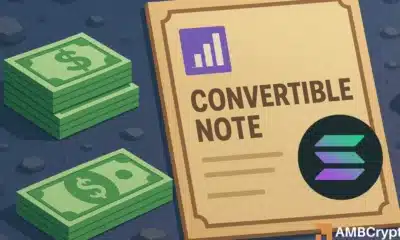How Uniswap’s front-end fees hit $1 mln

- The protocol’s decision to introduce swap fees culminated in a surge in revenue.
- The TVL also increased, indicating rising participants’ trust in Uniswap.
Front-end fees generated by the Uniswap [UNI] protocol have hit $1 million, according to data acquired from Dune Analytics. In October, there was some controversy about Uniswap’s introduction of front-end fees.
As previously reported by AMBCrypto, the Decentralized Exchange (DEX) noted that Uniswap would take an exchange fee of $0.15%. This fee is a swap charge for transactions between certain tokens.
While the development did not exactly go down well with its community, the $1 million landmark means that users are already adapting to the change.
Solves the initial rebuttal
The fees generated mean the front-end section contributed to 17.4% of the total fees that Uniswap generated in the last 24 days. AMBCrypto’s investigation determined that Uniswap’s decision not to bow to pressure to reverse the decision was born out of the importance of the exchange to traders.
An example of this importance is the trading of tokens built on the Ethereum [ETH] blockchain. For a long time, traders have chosen Uniswap as their preferred option for buying and selling tokens that are not available on Centralized Exchanges (CEXes).
So, it was evident that users had no option other than to align with the new update. Because the fees generated increased, Uniswap’s revenue also followed. According to Token Terminal, Uniswap Labs’ revenue increased by 69.8% in the last seven days.
Dwindling liquidity amid rising TVL
But at press time, the metric had reduced by 43%. Primarily Uniswap makes its revenue from transaction fees. It also collects a portion of the fees earned by Liquidity Providers (LPs).
LPs are entities that supply buy and sell orders to a DEX to increase market liquidity. These groups of market players do so by depositing crypto assets into a pool so that other traders can conduct swaps on the platform.
Therefore, the 24-hour decrease implies that there has been a drop in Uniswap usage. In terms of the Total Value Locked (TVL), DeFiLlama data showed that it increased by 6.83% in the last seven days.
The TVL measures the total amount of assets deposited into a protocol. Most times, these deposits are allocated in a bid to earn rewards or yields. The more, the higher the perceived trust a protocol has.
Realistic or not, here’s UNI’s market cap in ETH’s terms
When the TVL decreases, it means users are refraining from increasing the liquidity of the protocol.
Therefore, Uniswap’s press time TVL indicated that market participants have trusted the protocol enough to increase utility and funds sent into it. Should trading activity increase, then it is likely that the TVL will surpass $3.64 billion soon.









